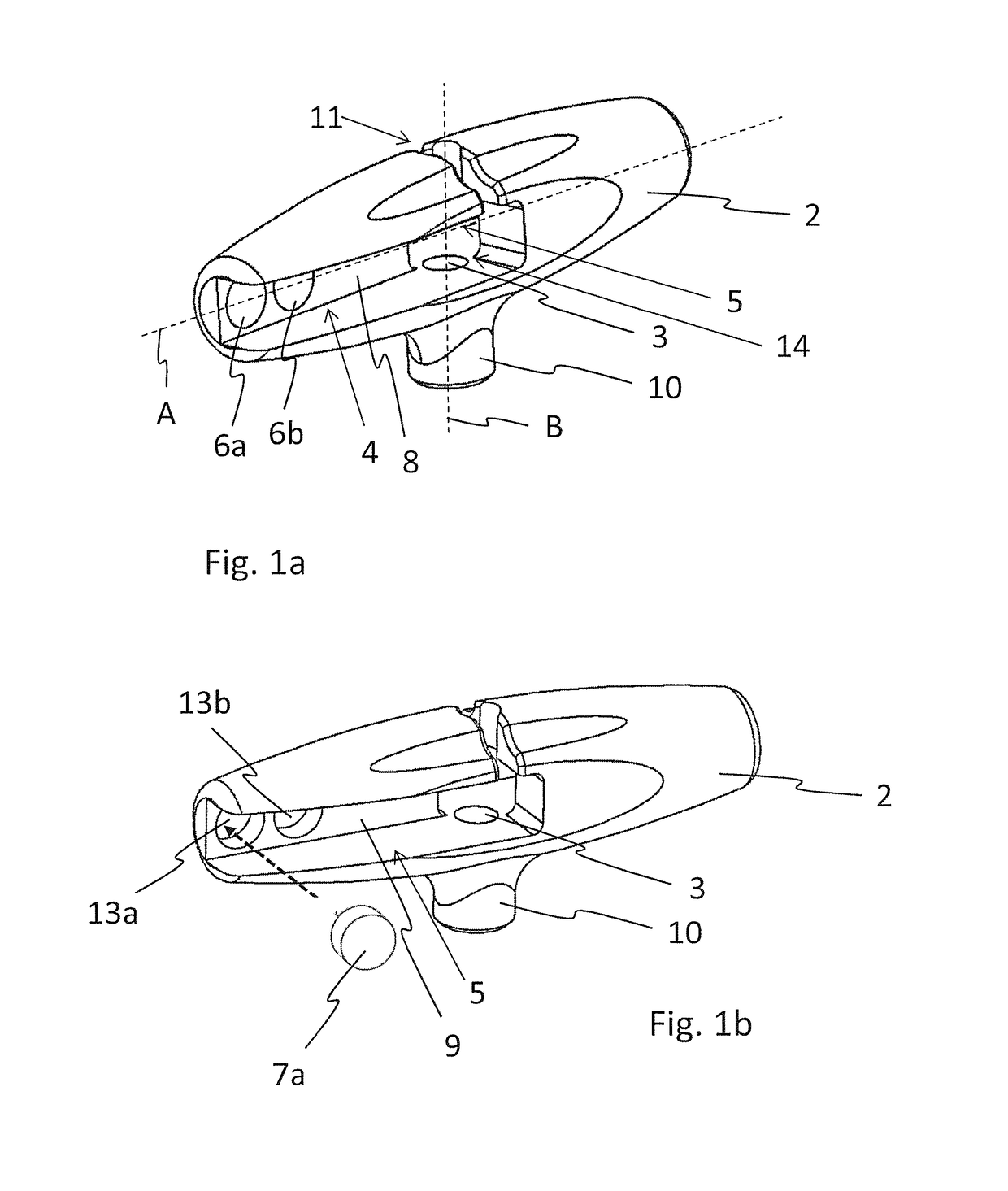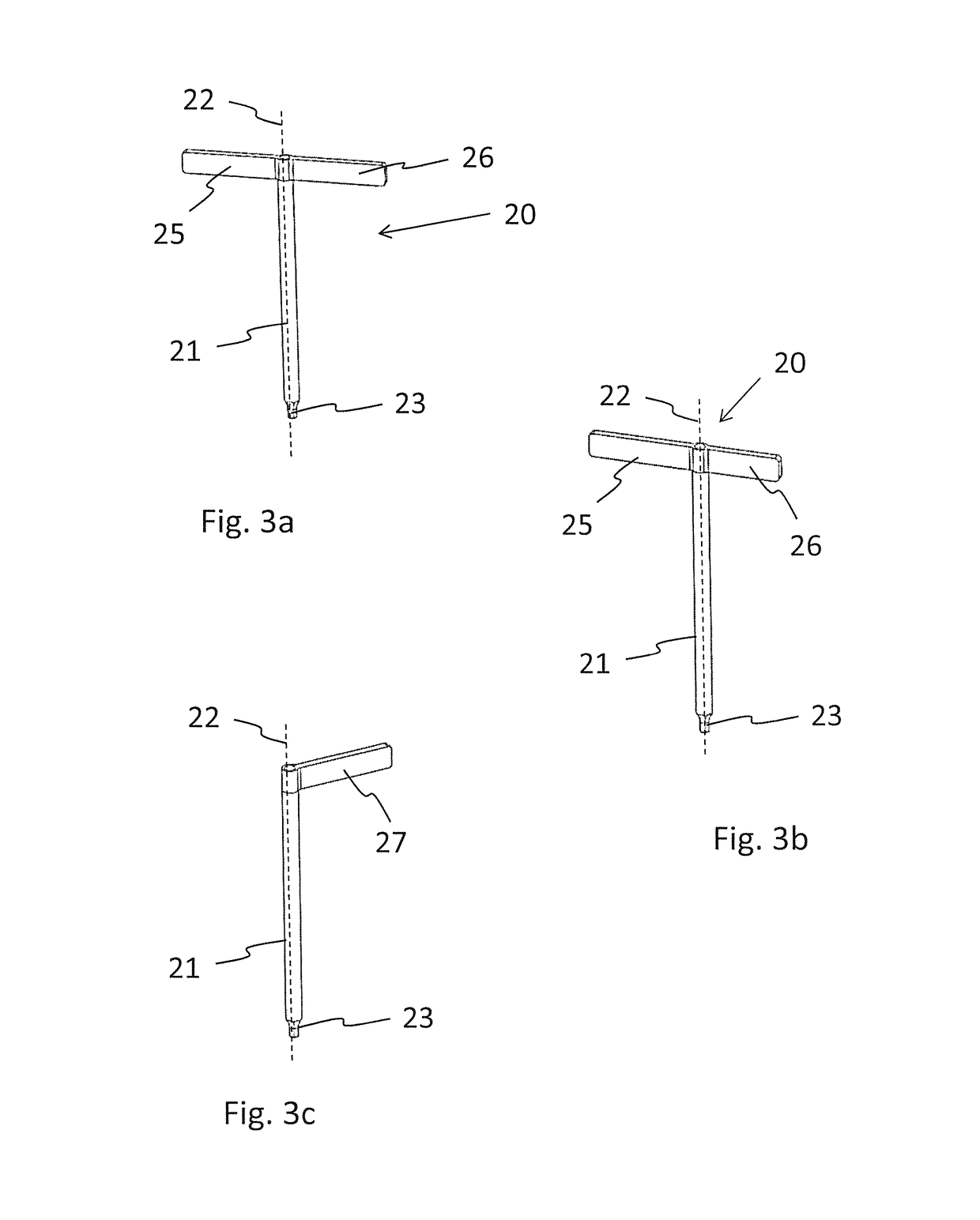Surgical torque limiter
a torque limiter and torque technology, applied in the field of torque limiters, can solve the problems of limited torque, high cost, and high complexity of common torque wrenches, and influence the cleanability of surgical instruments
- Summary
- Abstract
- Description
- Claims
- Application Information
AI Technical Summary
Benefits of technology
Problems solved by technology
Method used
Image
Examples
second embodiment
[0064]FIG. 6 shows a torque limiter 1. The protrusions 25, 26 of shaft 21 only interact with the second magnet 6b and the fourth magnet 7b, while the length of both protrusions 25, 26 is not sufficient to allow an interaction with the first magnet 6a or the third magnet 7a. The torque level of this embodiment equals the exerted force which is the sum of the force-distance pairs:
Exerted force=((Magnetization second magnet 6b×D2)+(Magnetization third magnet 7b×D3))
[0065]With this system a torque limiter kit can comprise one single handle 2 with multiple shafts 20, each shaft 20 yielding an individual torque level when arranged in said handle 2.
third embodiment
[0066]Referring to FIGS. 7a to 7c, a torque limiter 1 according to the present invention is shown. The first protrusion 25 of the shaft 20 has a greater length than the second protrusion 26. Further, the first magnet 6a and the second magnet 6b are arranged at different distances D5, D6 compared to the distances D1, D2 according to the embodiment as shown in FIGS. 5a and 5b.
[0067]The force exerted by the magnets 6a, 6b, 7a, 7b onto said two protrusions 25, 26 is based on the multiplication of the magnetization of each magnet 6a, 6b, 7a, 7b and the distance between the corresponding magnet 6a, 6b, 7a, 7b and the axis B of the central through bore 3. FIG. 7a shows the arrangement of the shaft 20 in handle 2 in a first orientation, where the first protrusion 25 is arranged in the first pocket 4 and the second protrusion 26 is arranged in the second pocket 5. The exerted force is given by:
Exerted force=((Magnetization first magnet 6a×D5)+(Magnetization second magnet 6b×D6)+(Magnetizati...
PUM
 Login to View More
Login to View More Abstract
Description
Claims
Application Information
 Login to View More
Login to View More - R&D
- Intellectual Property
- Life Sciences
- Materials
- Tech Scout
- Unparalleled Data Quality
- Higher Quality Content
- 60% Fewer Hallucinations
Browse by: Latest US Patents, China's latest patents, Technical Efficacy Thesaurus, Application Domain, Technology Topic, Popular Technical Reports.
© 2025 PatSnap. All rights reserved.Legal|Privacy policy|Modern Slavery Act Transparency Statement|Sitemap|About US| Contact US: help@patsnap.com



